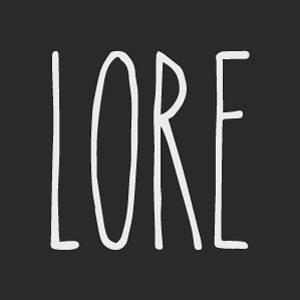Chuck Conaway, “The Dead Can Speak; Or, The Testament of Elizabeth Sawyer in Dekker, Ford, and Rowley’s The Witch of Edmonton,” Selected Papers of the Ohio Valley Shakespeare Conference 7.4, University of Akron, March 2016, http://ideaexchange.uakron.edu/spovsc/vol7/iss2014/4.
Henry Goodcole, The wonderfull discouerie of Elizabeth Savvyer a witch late of Edmonton (London: William Butler, 1621), https://quod.lib.umich.edu/e/eebo/A01874.0001.001?rgn=main;view=fulltext.
Sarah Johnson, “Disturbing Physicality: Mother Sawyer and her “sweet Tom-boy” in The Witch of Edmonton,” Early Modern Women: An Interdisciplinary Journal 4 (2009), pp. 273–274.
Barbara Allen Woods, “The Devil in Dog Form,” Western Folklore 13.4 (October 1954), pp. 229–235.
Boria Sax, The Mythical Zoo: An Encyclopedia of Animals in World Myth, Legend, & Literature (Oxford, UK: ABC-CLIO 2001).
Catherine Johns, Dogs: History, Myth, Art (Cambridge, MA: Harvard University Press, 2008).
Ernest L. Abel, Death Gods: An Encyclopedia of the Rulers, Evil Spirits, and Geographies of the Dead (Westport, CT: Greenwood Press 2009).
James Maffie, Aztec Philosophy: Understanding a World in Motion (Boulder, CO: University Press of Colorado 2014).
“Kerberos,” The Theoi Project, https://www.theoi.com/Ther/KuonKerberos.html.
Ethel H. Rudkin, “The Black Dog,” Folklore 49.2 (June 1938), pp. 111–131.
“Rudkin, Ethel (1893–1985),” A Dictionary of English Folklore edited by Jacqueline Simpson and Steve Roud (Oxford: Oxford University Press, 2003).
Theo Brown, “The Black Dog,” Folklore 69.3 (September 1958), pp. 175–192.
Alanson Skinner, Social Life and Ceremonial Bundles of the Menomini Indians XIII issue 1, Anthropological Papers of the American Museum of Natural History (New York 1913), pp. 86, 90.
Jeffrey Burton Russell, Mephistopheles: The Devil in the Modern World (Ithaca, NY: Cornell University Press, 1990).
Sophia Menache, “Netherworld Envoy or Man’s Best Friend? Attitudes toward Dogs in the Ancient World,” Routledge Handbook of Human-Animal Studies, edited by Garry Marvin and Susan McHugh (London: Routledge 2014).
Sophia Menache, “Dogs: God’s Worst Enemies?” Society & Animals 5.1 (1 January 1997), pp. 23–44.
Andrew Joynes, Medieval Ghost Stories: An Anthology of Miracles, Marvels, and Prodigies (Boydell & Brewer, 2001).
Andy Wright, “Devil Dogs: The Mysterious Black Dogs of England,” Modern Farmer, 13 June 2014, https://modernfarmer.com/2014/06/black-shuck
James B. Barnes, “5 Terrifying Stories and Lore about the Legendary ‘Black Dogs’ to Haunt Your Walks Home,” Thought Catalog, 19 October 2014, https://thoughtcatalog.com/james-b-barnes/2014/10/5-terrifying-stories-and-lore-about-the-legendary-black-dogs-to-haunt-your-walks-home.
“Barguest,” A Dictionary of North East Dialect, edited by Bill Griffiths (Northumbria University Press, ???).
“Bar-Guest,” A Glossary of Provincial and Local Words Used in England, collected by Francis Grose (1787).
A. Roger Ekirch, At Day’s Close: Night in Times Past (London: W. W. Norton & Company 2005).
John Brand, Observations on Popular Antiquities (Newcastle, UK: J. White 1777).
Alexandra Walsham, Providence in Early Modern England (Oxford, UK: Oxford University Press 1999).
George Waldron, The History and Description of the Isle of Man (London: W. Bickerton, 1744).
Thomas Booth, Kerruish’s New Illustrated Guide to the Isle of Man (London: W. H. Smith & Sons, n.d.).
Leslie Quilliam, “A Short History of Peel,” Peel Heritage Trust, 1999, https://web.archive.org/web/20120219072104/http://www.peelheritagetrust.net/peel.htm.
Christopher Reeve and David Waldron, Shock! The Black Dog of Bungay (Hidden Publishing 2010).
Enid Porter, “Fairies, Ghosts, and Black Dogs,” The Folklore of East Anglia (Totowa, NJ: Rowman & Littlefield, 1974).
Mark Norman, Black Dog Folklore (London, UK: Troy Books, 2016).
Melissa Westwind, Monster Dogs: The History of the Beast of Dartmoor (Westwind 2013).
Mark Norman, “Black Shuck: Proof of Existence Finally Found?”, Folklore Thursday, 8 September 2016, https://folklorethursday.com/urban-folklore/proof-black-shuck-definitely-not-discovered.
Chris Huet, “The Dark Companion: The Origin of ‘Black Dog’ as a Description for Depression,” The Black Dog Institute, http://citeseerx.ist.psu.edu/viewdoc/download?doi=10.1.1.619.7275&rep=rep1&type=pdf.
Francis Young, Magic as a Political Crime in Medieval and Early Modern England: A History of Sorcery and Treason (London: I.B. Taurus 2017).
Abraham Fleming, A straunge and terrible wonder wrought very late in the parish church of Bongay (London: J. Allde Frauncis, 1577), https://quod.lib.umich.edu/e/eebo/A00943.0001.001?rgn=main;view=fulltext.
Clare Elizabeth Painting Stubbs, Abraham Fleming: writer, cleric, and preacher in Elizabethan and Jacobean London, Dissertation, (University of London, 21 April 2011).
Jonathan Woolley, “Hounded Out of Time: Black Shuck’s Lesson in the Anthropocene,” Environmental Humanities 10.1 (May 2018), pp. 295–309.
“Flag Fen Archaeological Park,” Peterborough, https://www.visitpeterborough.com/things-to-do/flag-fen-archaeological-park-p875681.
Rod Mengham, “Soluble Culture,” The Kenyon Review 25.3/4 Culture and Place (Summer–Autumn 2003), pp. 72-77.
Francis Pryor, The Flag Fen Basin: Archaeology and Environment in a Fenland Landscape (Swindon, UK: English Heritage Archaeological Reports, 2001).
Kiersten Carr, Hellhounds and Helpful Ghost Dogs: Conflicting Perceptions of ‘Man’s Best Friend’ Encoded in Supernatural Narrative, Masters Thesis, Utah State University, 2018.
Katharine M. Briggs, A Dictionary of British Folk-Tales in the English Language, Park B: Folk Legends (Oxford, UK: Routledge 1970), pp. 13–14.
Peter Applebome, “And You Thought a Black Cat Was Bad Luck,” The New York Times, 19 February 2006, https://www.nytimes.com/2006/02/19/nyregion/and-you-thought-a-black-cat-was-bad-luck.html.
W.H.C. Pynchon, “The Black Dog,” The Connecticut Quarterly 4.2 (June 1898), pp. 153–161, https://ia802606.us.archive.org/14/items/connecticutquart02hart/connecticutquart02hart.pdf.
Ray Bendici, “The Black Dog of West Peak,” Damned Connecticut, November 2008, http://www.damnedct.com/the-black-dog-of-west-peak.
David E. Philips, Legendary Connecticut: Traditional Tales from the Nutmeg State (Willimantic, CT: Curbstone Press, 1992).
“Walter Hubbard,” Meriden Hall of Fame, http://www.meridenhalloffame.org/Inductees/Year.asp?InductionYear=1980.
“Hubbard Park,” City of Meriden, https://www.meridenct.gov/city-services/parks-and-recreation/hubbard-park.
Joseph Citro, Passing Strange: True Tales of New England Hauntings and Horrors (Boston, MA: Houghton Mifflin, 1996).
Joseph Citro, Weird New England: Your Travel Guide to New England’s Local Legends and Best Kept Secrets (Sterling Books, 2010).
“Harry C. Pynchon” Obituary, Norwich Bulletin (Norwich, CT), 6 Jan 1910, p.7.
“Non-Academic—Graduate School of Arts and Sciences,” The Harvard Graduates Magazine XVIII 1909–1910 (Harvard Graduates’ Magazine Association: Boston, MA 1910), p. 550.
Ken Botwright, “Abington Police hunt for dog that killed 2 ponies,” Boston Globe, 1 May 1976, p.3.
“POLICE PURSUE KILLER DOG,” Boston Globe, 4 May 1976, p. 7.
Manli Ho, “Abington is nervous as hunt continues for the ‘killer dog’ ” and “Memory of Dog Troubles Abington,” Boston Globe, 8 May 1976, p.1, 9.
Loren Coleman, Mysterious America: The Ultimate Guide to the Nation’s Weirdest Wonders, Strangest Spots, and Creepiest Creatures (New York: Paraview Pocket Books, 2001).
